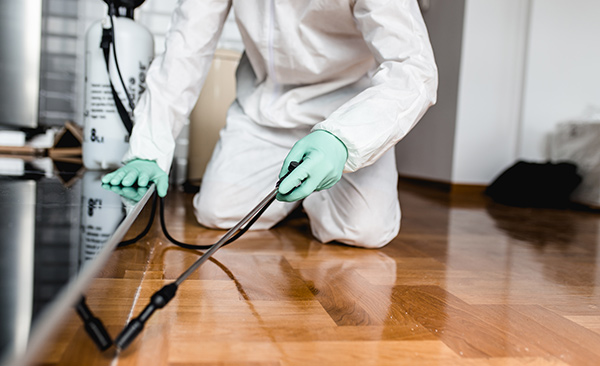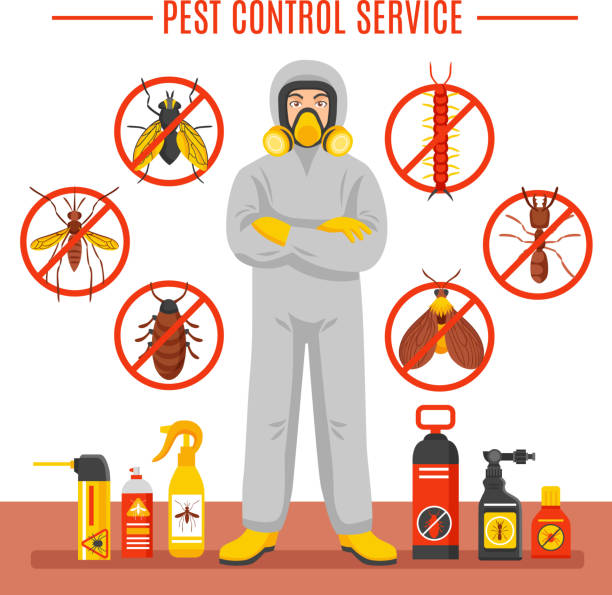Reliable Pest Control for a more comfortable living space.
Eco-Friendly Pest Control Approaches for Handling Wild Animals in Urban Areas
Urban areas frequently find themselves at the intersection of human activity and wildlife, bring about unique difficulties in bug monitoring. Environmentally friendly techniques highlight sustainable coexistence, employing techniques such as environment modification and natural repellents to minimize human-wildlife problems. These strategies not just protect the environment but likewise improve community interaction in wild animals monitoring. As city populaces remain to expand, recognizing the dynamics of wildlife interactions becomes increasingly critical. What cutting-edge approaches can be executed to guarantee both ecological balance and urban safety? Discovering this question reveals a compelling landscape of possible remedies.
Comprehending Urban Wildlife Characteristics
Recognizing Urban Wildlife Characteristics is crucial for establishing effective and environmentally friendly pest control strategies. Urban locations are progressively coming to be environments for various wild animals types, driven by variables such as environment fragmentation, food accessibility, and human encroachment. Identifying these dynamics permits a nuanced approach to pest administration that lines up with eco-friendly principles.
Urban wild animals often includes varieties such as raccoons, squirrels, and birds, which adapt to city atmospheres, discovering specific niches in eco-friendly spaces, parks, and even suburbs. Their visibility can result in problems with people, particularly when they make use of personnels for food and shelter. Comprehending the behaviors and environmental duties of these species notifies approaches that reduce unfavorable communications while promoting biodiversity.
Furthermore, recognizing the interdependencies within city environments aids in identifying vital locations for habitat conservation and reconstruction. This knowledge adds to the advancement of incorporated parasite monitoring (IPM) techniques that think about the environmental equilibrium, therefore reducing reliance on harmful chemicals. By promoting conjunction in between people and metropolitan wild animals, cities can produce healthier atmospheres that profit both citizens and neighborhood ecological communities, leading the way for sustainable metropolitan living.
Natural Repellents and Deterrents
Natural repellents and deterrents provide a sustainable alternative to conventional parasite control techniques by taking advantage of the power of nature to maintain unwanted types at bay. These environmentally friendly services normally use plant-based active ingredients, necessary oils, and various other naturally occurring materials that prevent bugs without hurting the environment.
One reliable all-natural repellent is peppermint oil, which is understood to push back rats and bugs. Its strong scent is undesirable to lots of insects, making it a preferred selection for metropolitan settings. Similarly, vinegar and citrus peels can act as deterrents, as their strong odors are commonly unappealing to various wild animals.
In addition, diatomaceous planet is an all-natural powder that can be spread in locations vulnerable to insect task, successfully dehydrating and hindering bugs without posing threats to non-target species. Garlic sprays and neem oil are recognized for their capacity to repel a vast variety of parasites, including both pests and visit the site larger wildlife.
Applying these natural repellents not only lowers dependence on chemical pesticides however also promotes a much healthier urban ecological community, fostering a much more balanced coexistence in between humans and wild animals. By utilizing these methods, city locations can efficiently manage parasite populations while lessening environmental impact.
Habitat Modification Strategies
Efficient habitat adjustment techniques play an essential function in lasting bug management by changing the setting to make it less helpful to pest invasions. By recognizing the eco-friendly characteristics of urban areas, residential or commercial property proprietors can carry out strategic modifications that hinder bugs while promoting biodiversity.
(Fire Ant Control)One primary strategy involves preserving proper hygiene. This includes regular waste elimination, safeguarding garbage containers, and removing standing water to minimize breeding websites for insects and rats. Furthermore, landscape design practices such as selecting indigenous plants can boost eco-friendly equilibrium, offering habitats for advantageous microorganisms while reducing resources for parasites.
Another crucial strategy is to secure access points in buildings. Examining and fixing cracks in foundations, walls, and home windows can significantly minimize pest accessibility. In addition, developing physical barriers, such as fences or plant barriers, can inhibit wild animals activity right into human-inhabited areas.
Integrated Pest Management Practices
Structure upon environment adjustment methods, incorporated parasite monitoring (IPM) techniques use a holistic method to regulating parasite populations while decreasing ecological impact. IPM integrates different approaches, including biological, social, mechanical, and chemical controls, to achieve effective pest administration.
Organic control entails the introduction of all-natural predators or parasites to decrease bug populations. Social techniques, such as crop turning and sanitation, interrupt pest life cycles and lessen their environments - Pest control service. Mechanical controls, like catches and obstacles, give immediate remedy for insect pressures without chemical treatment
Chemical controls are utilized as a last hope, concentrating on targeted applications that restrict harm to non-target species and the environment. The choice of eco-friendly chemicals, when needed, is integral to the IPM structure. Additionally, checking parasite populaces and analyzing potential damages assists educate decision-making, making certain that treatments are prompt and effective.
Community Involvement and Education

(Spider exterminator Port Charlotte)Workshops and educational sessions can equip residents with understanding about indigenous species, habitat preservation, and efficient non-toxic parasite administration techniques. Collaboration with colleges, regional organizations, and government companies better boosts educational outreach, making sure that vital details reaches diverse target markets.
Furthermore, community-led initiatives, such as community clean-up days and environment restoration tasks, not only promote biodiversity but additionally reinforce neighborhood ties. Pest control service. By urging residents to share their experiences and monitorings, neighborhoods can establish targeted strategies that address details regional insect problems
Including comments from locals into insect management intends makes it possible for an extra responsive and flexible strategy to wild animals challenges. Eventually, notified and involved communities are vital to attaining long-lasting success in eco-friendly pest control, causing much healthier city atmospheres that respect both human and eco-friendly demands.

Final Thought
In verdict, environment-friendly bug control approaches offer lasting solutions for taking care of metropolitan wildlife. By focusing on habitat alteration, making use of natural repellents, and executing integrated pest management techniques, communities can cultivate an unified coexistence with regional fauna.